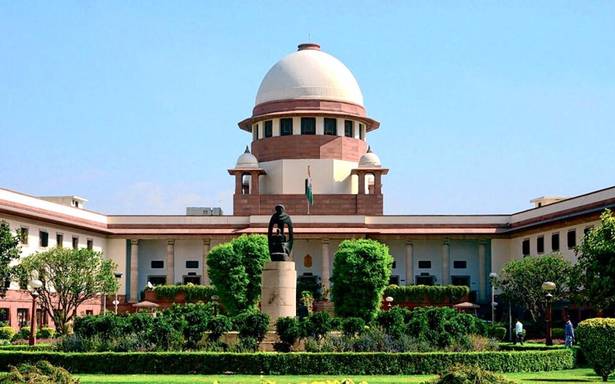‘Reasons cannot be merely economic’
The Supreme Court on Tuesday held that economic criterion should not be the sole basis to identify sections of backward communities as ‘creamy layer’.
Social advancement, higher employment in government services, etc, played an equal role in deciding whether such a person belonged to the creamy layer and could be denied quota benefits, it said.
“The basis of exclusion of ‘creamy layer’ cannot be merely economic,” a Bench of Justices L. Nageswara Rao and Aniruddha Bose observed in their judgment, while referring to the court’s Indra Sawhney verdict of 1992, which declared that ‘creamy layer’ in a backward community should be excluded from reservation so that the more deserving were able to come up.
The court had illustrated that ‘creamy layer’ would include “persons from backward classes who occupied posts in higher services like IAS, IPS and All India Services had reached a higher level of social advancement and economic status, and therefore, were not entitled to be treated as backward”.
Explaining the 1992 verdict, Justice Rao, said: “Such persons were to be treated as ‘creamy layer’ without any further inquiry. Likewise, people with sufficient income who were in a position to provide employment to others should also be taken to have reached a higher social status and therefore, should be treated as outside the backward class. Similarly, persons from backward classes who had higher agricultural holdings or were receiving income from properties, beyond a prescribed limit, do not deserve the benefit of reservation. The above mentioned categories were necessarily to be excluded from backward classes”.
Two Haryana notifications
The court was hearing a petition challenging two notifications issued on August 17, 2016 and August 28, 2018 by the Haryana government sub-classifying backward classes solely on economic basis while fixing the criteria for creamy layer.
The notifications, issued under the Haryana Backward Classes (Reservation in Services and Admission in Educational Institutions) Act of 2016, said children of persons having “gross annual income” of up to ₹3 lakh annually would get the benefit of reservation in services and admission in educational institutions. The remaining quota would go to those from backward families, which earn between ₹3 lakh and ₹6 lakh per annum.
The sections earning over ₹6 lakh annually were considered as ‘creamy layer’ under Section 5 of the 2016 Act.
The apex court held that the Haryana’s notifications have violated the law declared in the Indra Sawhney judgment by identifying creamy layer only on the basis of income.
“In spite of Section 5(2) of the 2016 Act making it mandatory for identification and exclusion of ‘creamy layer’ to be on the basis of social, economic and other relevant factors, the State of Haryana has sought to determine ‘creamy layer’ from backward classes solely on the basis of economic criterion and has committed a grave error in doing so,” the court held, quashing both the notifications.
The court directed the State to issue fresh notifications in three months. It did not, however, disturb admissions to educational institutions and appointments to State government services made on the basis of the two notifications.
Source: Read Full Article

